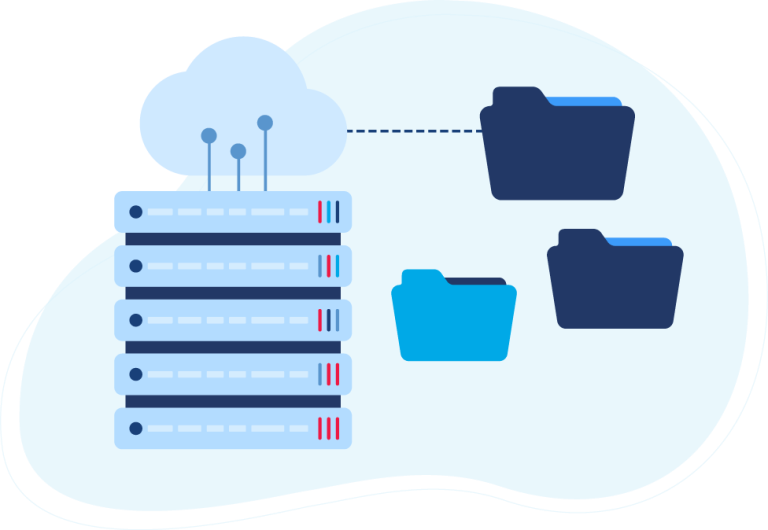As we culminate this series, I look back at where I started with this research and I am amazed at how much we have covered. On my end, I started with such a skewed idea of data integration, but after much-needed research, my perception and I hope yours too has cleared. Throughout the series, we discussed some key topics like the approaches of data integration, the different processing solutions, the issue of data validation, the importance of thinking strategically, and much more! In this particular article, we will go over some key questions and concepts on data integration.
So, let’s dive into it starting with the question that started this whole journey. Read on!
Q.1: What is data integration and its benefits?
Recalling from the very first article of the series introducing data integration, data integration combines data residing in different sources into meaningful and valuable information. As the information is transformed, it provides users with a real-time view of business performance. A strategic data integration approach facilitates consistent movement and delivery of data, creating a unified view of data across a wide range of applications. There are several approaches to data integration:
- Manual Data Entry
- Plug and Play
- Manual File Download and Upload
- Do It Yourself (DIY)
- Integration Platform as a Service (iPaaS)
Each one of these approaches is unique and fulfill specific business needs. At the end of the day, the approach you choose has to be accompanied with a strategy. Once you adopt the right approach, it’s time to start enjoying some of the benefits like;
- Improved business performance by integrating data from multiple sources it allows you to exploit the value of insight, improve processes, and provide a better customer experience.
- Reduced data errors by automating the error-prone process of manual data entry and ensuring data are located where it needs to be quickly and efficiently.
- Increasing the value of data by transforming the data into a unified model creating a consistent structure allowing you to leverage your data strategically.
Q.2: What is the difference between batched-based vs real-time processing?
Let’s start with understanding these two concepts separately.
Batch-based processing is the movement of data in scheduled intervals after a sufficient amount of data is collected. With this process, data is collected and organized into one transaction file (the source). Once enough data is collected, the master file (central database/target) is then updated through data integration at scheduled periods. The best example is the hydro bill, once enough electrical consumption data is collected for a period of time, it is then processed together in the form of your bill.
On the other hand, real-time data processing integrates data in real-time. Once the information is received from a source, the data is processed the exact moment it’s obtained. With real-time processing, the movement of data is immediate, the data is constantly up-to-date and the master file is updated at the same time. For example, reservation systems are updated in real-time to ensure information is up-to-date.
The main difference between the two is the actual process of moving data. While batch-based processing moves data in scheduled batches, real-time processing moves data immediately. At the end of the day, one is NOT better than the other. Options for configuring the way data moves revolves around your business’ needs and your broader integration strategy.
Q.3: Does data integration fix my data?
Short Answer: Absolutely not!
Recall from Article 3, the process of data integration does not clean, validate, or fix your data. Remember, data integration is the movement of data from disparate sources. Think of it as garbage in and garbage out, whatever information is inputted into the system, it will be the same one that is integrated through the applications.
What does this mean? Well, the validation of information needs to happen before the information is sent. For example, if your customer accidentally spells the address, postal code or city wrong then you will have incorrect data surging through your applications. So, if the data is wrong per se then it needs to be thoroughly checked for any errors or inconsistencies prior to being integrated. Here’s why data integration does not alter the data since data integrity must reside in the central point of truth for that data element. Meaning, that the true value of the data should reside where the data was originally created.
Q4: Is data integration a strategic investment?
Absolutely, adopting a strategic data integration approach is an investment toward digital transformation. As I discussed throughout the series and specifically in the fourth article, adopting a data integration approach is not a cheap quick-fix solution, it is more complex than that. It involves adopting a strategy and approach to ensure the solution perfectly fits your business needs.
If you don’t view it as an investment towards the future, the result of adopting a poor approach to data integration can have severe repercussions. Such as, loss of revenue, loss of customers to competitors, and diminished customer experience. But, when a data integration solution is accompanied with a well-rounded strategy and approach it will optimize business operations.
As demonstrated by a recent study conducted by Forrester, the majority of challenges associated with data integration are a result of inadequate or weak integration strategies.
Q.5: What is VL OMNI’s role in data integration?
VL OMNI plays an integral part in the data integration ecosystem by bringing 25+ years of data movement expertise to the table. VL OMNI’s agile iPaaS solution has the unique ability to apply business rules directly to the workflow, meaning that your business’ unique necessities can be and will be included directly to the integration itself. VL OMNI’s platform is more than capable of moving data seamlessly in real-time through applications regardless of the volume of data transactions. The VL OMNI platform adapts to your business’ growth, accelerations or expansions—making it agile to any change.
VL OMNI strives serving businesses with complexities, high levels or growing levels of transactions, and/or sales volumes. Growing businesses looking to adopt an approach that promotes flexibility, agility, and scalability—VL OMNI is the best solution.
In Summary
Ultimately, data integration can greatly improve business processes. It is incumbent that you pair your data integration approach with a well-rounded strategy in order to promote long-term growth. As I have learned throughout this process, there is a lot of misconceptions surrounding the topic of data integration, which is why it is incredibly important to have an excellent understanding of how data integration works and how it moves.
 D365 Business Central
D365 Business Central Netsuite
Netsuite


